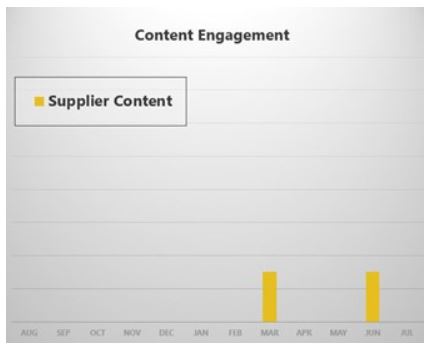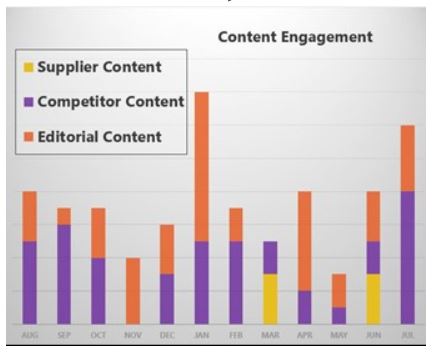Imagining An Ideal Application Of Behavioral Analytics In B2B Marketing

Understanding what to do with marketing data is even harder than collecting clean data in the first place. Even with solid data, B2B marketers struggle to take full advantage of the power of behavioral analytics. Looking beyond your own data can help marketers use behavioral analytics to fully understand engagement and to differentiate between interest and purchase intent.
Marketing’s Biggest Blind Spot
There are plenty of martech tools that can collect and analyze data about prospects. But marketers have a common blind spot: you can only analyze what is generated from your website, your content, and your audience data.
That’s a problem because your prospects are dropping valuable breadcrumbs of data on their way to purchasing from your competitors. Prospects are already at a late stage in the buyer’s journey by the time they are willing to engage with your sales team. And that means you aren’t the only option they’re considering. What about all of those prospects who interact with your competitors and aren’t even considering you? In order to capitalize on the early indications of buying intent, marketers need visibility into what buyers are doing beyond your own brand.
According to MRP Prelytix, “More than 99 percent of your buyer’s reality exists outside of your CRM and marketing automation. Somewhere, your audiences are already researching and shopping for things that you could solve. Searches, clicks on ads, documents read, pages visited … all of these are clues. Almost all of these clues exist somewhere outside of your view.”
This isn’t a new concept. Gartner’s research shows only 17 percent of a buying group’s time is spent meeting with suppliers. These buyers are spending significantly more time doing independent research. And while it’s great that your marketing data can show you when they research your brand and your products, you also need to know what they are researching about your competitors.
Ideally, B2B marketers would have a crystal-clear view of the demographic, firmographic, event, and contextual data of a buyer’s interaction with your own company and with your competitors.
The Value Of Unseen Data
This chart shows blinded data from company-wide interactions with a specific supplier’s content that is syndicated on one of our B2B websites. On the surface, this isn’t the kind of lead that gets marketing or sales teams excited.


Here’s what that same prospect’s activity looks like beyond just this one supplier’s content. It becomes much easier to identify an active buyer’s journey when the data is expanded to show editorial content about related themes in the industry and interactions with competitors’ content.

Imagining Marketing’s Potential With Behavioral Analytics
No single software platform, no single agency, and no single third-party data vendor can unlock all of the information you need about your prospects in order to uncover purchase intent. This doesn’t mean marketers should throw in the towel on behavioral analytics. It just means you can’t instrument your way to a completely transparent view of your buyer.
A behavioral analytics-based marketing strategy requires a mix of good content, cross-functional collaboration, the right vendor partners, a robust set of seamlessly integrated systems to manage data, insight into your competitors' share of voice, and patience.
Once those align, the best marketing teams will operate like a well-oiled machine that can guide a lead throughout every stage of the buyer’s journey. That process might look something like this in a perfect marketing world:
- A prospect would download your content (or your competitor’s content), which would automatically capture 100 percent accurate demographic, firmographic, event, and contextual data.
- That data would seamlessly integrate with your CRM and lead scoring system.
- Your marketing automation system would kick in and nurture that lead, delivering related and helpful content that precisely aligns with the prospect’s stage in the buyer’s journey.
- Along the way, intent signals from prospects would trigger you to expedite passing that lead to sales when a group of decision-makers shows collective interest and increased activity.
- As a result, the sales team would have a plethora of highly qualified leads that would be easier to close, thus enabling marketing teams to prove real growth and tangible ROI.
This may sound like a pipe dream, but B2B marketers are closer than ever to orchestrating this ideal process. Understanding buyer intent across all channels of engagement – not just your own channels – can be done by harnessing the power of behavioral analytics.
Originally published on Follow Your Buyer
Let's work together.
Whether you're ready to hit the ground running or just starting and have questions, we're here to understand your goals and explore how we can help you.